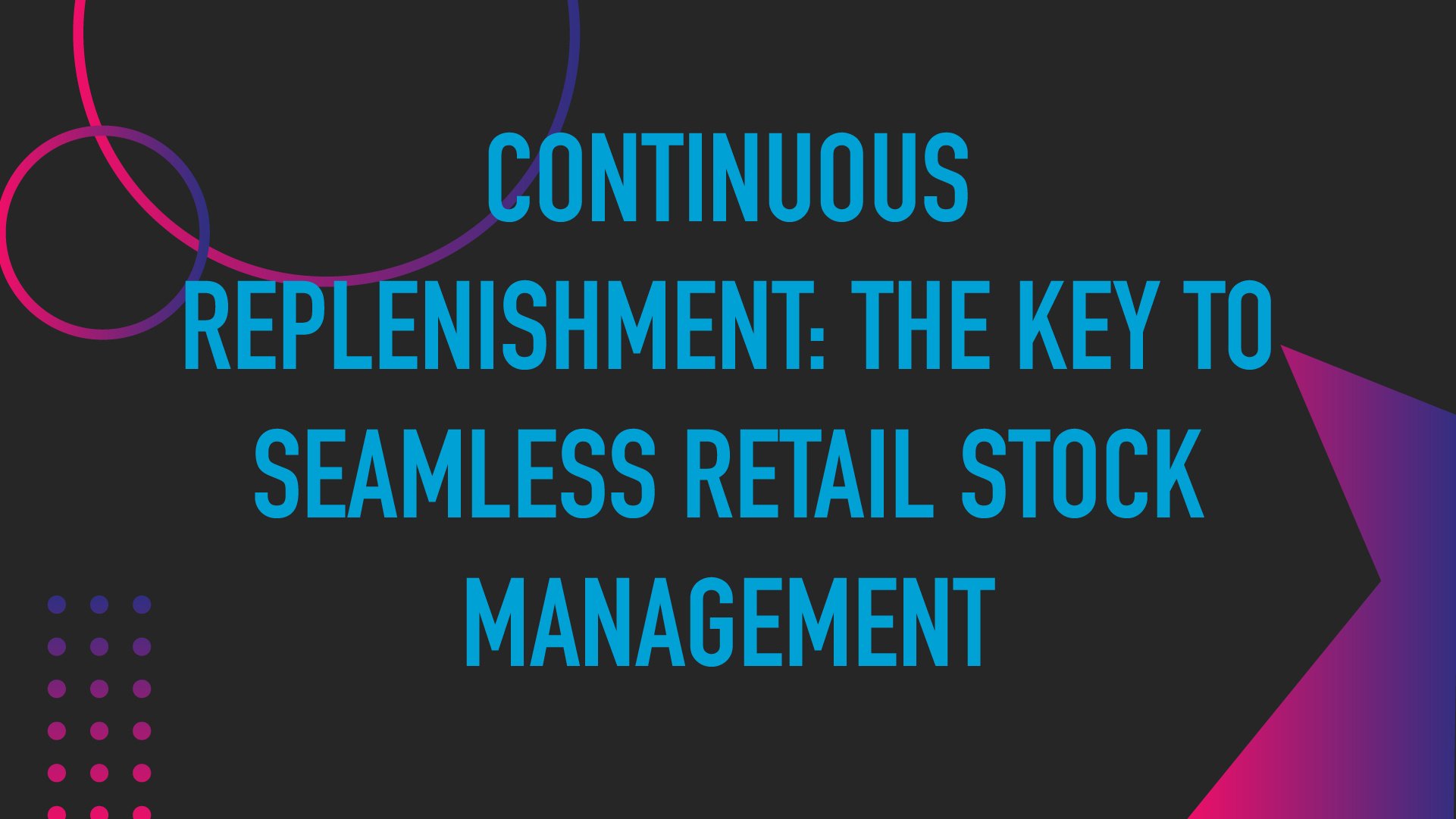How Inventory Management Drives Supply Chain Visibility


Ensuring product availability while avoiding excess inventory can feel like walking a tightrope, where one misstep leads to lost sales or wasted resources. Cluttered shelves, or even worse, empty ones, can cause sales to drop and operational costs to skyrocket. Visibility into every stage of the supply chain is the secret sauce to making informed decisions, anticipating customer demand, and responding quickly to market changes. However, one of the most significant hurdles of supply chain visibility is inventory management.
Why Supply Chain Visibility Matters
Supply chain visibility is about knowing where products are at any given moment and having insight into potential bottlenecks, delays, or opportunities to optimize. Companies that improve supply chain visibility can reduce operational costs by up to 20% while also increasing efficiency and customer satisfaction. The right inventory management system provides real-time data and seamless integration across all facets of the supply chain, giving retail and field teams the insight they need to manage stock, forecast demand, and maintain strong relationships with suppliers.
Real-Time Data for Informed Decision-Making
When every decision counts, having access to real-time data is invaluable. Inventory management systems that accurately track stock levels in real-time provide immediate insights into how products are moving through the supply chain. With accurate insights on current stock levels, teams can make swift decisions about restocking, promotions, and inventory adjustments.
This level of visibility improves coordination between suppliers and retail locations, while helping businesses identify and resolve inefficiencies before they turn into costly problems. Without real-time tracking, companies are left guessing, which can result in overstocking, stockouts, or delayed shipments—all of which hurt the bottom line.
Minimizing Stockouts and Overstocking
A primary goal of inventory and item management is to avoid stockouts (running out of a product) and overstocking (holding excess inventory). Both scenarios negatively impact supply chain visibility by disrupting the smooth flow of goods. When a product is out of stock, customer satisfaction plummets. On the flip side, overstocking ties up capital and space that could be used more effectively.
Accurate inventory management ensures continuous product availability, which is key to maintaining strong supply chain visibility. When teams know the exact quantity and location of each item, they can better meet customer demand while minimizing carrying costs. In fact, companies with high inventory accuracy can reduce carrying costs by 20% to 30%.
Inventory management makes it easier to track slow-moving stock and initiate timely promotions or discounts to clear out excess inventory, freeing up space for high-demand products. This proactive approach not only maximizes sales opportunities but also strengthens customer trust, as consumers come to rely on the brand for consistently available products.
Integration with Other Supply Chain Processes
Modern inventory management systems often integrate seamlessly with other supply chain processes, such as transportation, warehousing, and supplier management. These integrated systems create a unified view of the entire supply chain, which is crucial for making informed decisions.
When inventory management is part of a broader supply chain system, it enhances visibility by providing detailed information on stock levels, shipment statuses, and supplier performance. This enables retail and field teams to coordinate efforts more effectively, reducing delays and improving overall supply chain efficiency.
Demand Forecasting for Supply Chain Efficiency
Getting demand forecasting right is crucial for managing the supply chain effectively. With better forecasting, companies can reduce lead times, lower holding costs, and improve service levels—all of which contribute to enhanced supply chain visibility.
When predictions are off, it can either lead to over-ordering—resulting in higher storage costs and tied-up cash—or run the risk of stock-outs (OOS), which can mean lost sales and unhappy customers. By leveraging historical data, market trends, and customer behavior, demand forecasting helps teams predict future sales and adjust their inventory levels accordingly, reducing the risk of both over-ordering and stockouts, creating a smoother supply chain flow.
Enhancing Supplier Collaboration
Strong supplier relationships are crucial for maintaining supply chain visibility. When businesses collaborate closely with suppliers, they gain greater insight into product availability, lead times, and potential disruptions. This allows companies to align their inventory strategies with supplier capabilities, ensuring a smooth and responsive supply chain.
Effective supplier management isn’t just about negotiating better prices—it’s about building long-term partnerships that foster open communication and transparency. A collaborative approach strengthens supply chain resilience and allows teams to adapt to changes in demand.
By working closely with suppliers, retail teams can anticipate potential issues, such as delays or shortages, and make proactive adjustments to their inventory levels.
Streamlining the Ordering Process with Automation
Manual ordering processes can be time-consuming and prone to errors, making it difficult to maintain visibility across the supply chain. Automated ordering systems solve this problem by streamlining the ordering process, minimizing manual workloads, and ensuring that stock levels are maintained with precision.
Automated systems use real-time inventory data to place orders at the right time based on preset thresholds. This reduces the risk of over-ordering or running out of stock, while also freeing up time for retail teams to focus on more strategic tasks. Automation also ensures that orders are placed accurately, reducing the likelihood of miscommunications with suppliers and ensuring that stock levels align with customer demand.
The Benefits of Just-in-Time Inventory Management
Just-in-Time (JIT) inventory management is an effective strategy for keeping stock levels low and receiving goods only as they are needed. This approach minimizes carrying costs and reduces the risk of holding obsolete stock. JIT requires close coordination with suppliers to ensure that products arrive just in time for sale, maintaining high service levels without overcommitting resources.
JIT inventory management optimizes resource allocation across the supply chain, leading to improved cash flow and more efficient use of space and labor. When combined with accurate inventory tracking, demand forecasting, and strong supplier relationships, JIT becomes a powerful tool for improving supply chain visibility.
How Inventory Management Drives Supply Chain Visibility
The success of supply chain visibility is rooted in the integration of advanced inventory management systems with data-driven insights. Brands that invest in these systems will be positioned to thrive, ensuring that they can meet customer demand, reduce operational costs, and deliver a better customer experience—all while maintaining full visibility across the supply chain.

Experiential Marketing: Turning Shoppers into Loyal Customers
 If you want a complete how-to checklist of setting up a campaign that turns regular shoppers into loyal customers, checkout our Experiential Marketing Guide.
If you want a complete how-to checklist of setting up a campaign that turns regular shoppers into loyal customers, checkout our Experiential Marketing Guide.
In today’s digital age, shoppers crave experiences over mere transactions. This shift makes experiential marketing essential for brands seeking lasting connections. By offering unique, memorable events that resonate emotionally, businesses can convert casual customers into lifelong advocates. A great example is Red Bull's daring space jump, which aligned perfectly with its adventurous brand ethos.
To succeed, brands must deeply understand their audience, develop emotionally-driven concepts, and creatively market these campaigns across physical and digital spaces. Ongoing engagement, consistent brand integration, and effective use of tools like Movista for event execution are key to long-term success.
featured content
featured content

The Importance of On-Shelf Availability in Retail: Why Keeping Items Stocked is Critical for Competitiveness in 2026
Learn why on-shelf availability is critical in today's retail store environment









